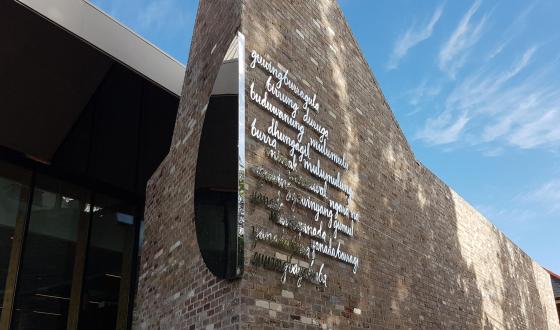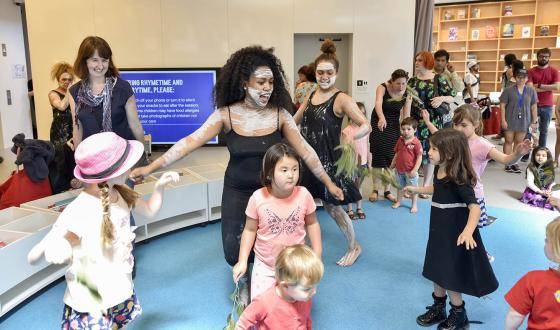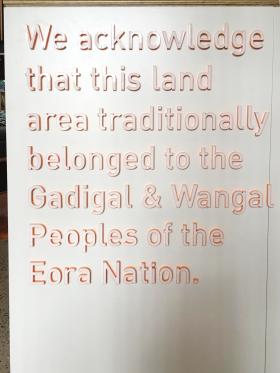Service area: Indigenous peoples
Public libraries need to be attractive, welcoming and relevant to all members of their community, with particular emphasis on ensuring these spaces are welcoming to Indigenous community members.
Public libraries play a role in the promotion and retention of Indigenous culture, with many housing specialist collections of books, audio-visual materials, periodicals, local history and ancestry, and artefacts relating to Aboriginal and Torres Strait Islander people.
Encouraging Indigenous library users
The incorporation of Aboriginal art and cultural activities into public libraries has played a major role in encouraging Indigenous users. Some libraries report an increase in popularity for Indigenous communities as a result of the employment of Indigenous library staff.
Community consultation is key to providing valid services, spaces and material selection. The process of building relationships and ongoing collaboration and engagement with local communities can be developed through cooperation and communication with organisations such as a local Aboriginal Land Council. Some councils have Reconciliation Action Plans (RAPs) that guide libraries in engagement with their Indigenous communities.
Protocols for libraries, archives and information services are published by the Australian Library and Information Association for the Aboriginal and Torres Strait Islander Library and Information Resource Network (ATSILIRN).

| 
|
Indigenous Spaces in Library Places
To help you create a welcoming library for the local Indigenous community the State Library’s Indigenous Engagement team has created a guiding strategy Indigenous Spaces in Library Places: Building a Vibrant Public Library Network Inclusive of Indigenous Peoples and Communities. This strategy and the associated toolkit provide guidance to the NSW public library network in enhancing services dedicated to the local Aboriginal and Torres Strait Islander population. This includes recommendations to:
- create a visible Indigenous presence in the library space – for example, through signs (e.g. welcome or acknowledgement of the local Aboriginal community and traditional owners), Aboriginal flags, displays and artwork
- develop collections related to Australian Indigenous history and culture - acquiring materials written by, as well as about, Aboriginal and Torres Strait Islander people; ensure collections contain contemporary works, that represent the vibrancy and resilience of Aboriginal culture today
- facilitate appropriate access to library archives and information resources for Aboriginal and Torres Strait Islander communities which may include viewing areas for materials that may have secret, sacred or sorrow considerations
- collaborate with local Aboriginal and Torres Strait peoples and communities to create and share stories including collecting local histories relating to experiences of the Indigenous community, collecting ephemera, collaborating with Indigenous artists
- collaborate/work in partnership with the local Aboriginal community to provide programs and events driven by the community's needs and aspirations (e.g. digital literacy, language programs, family history, etc.).

| 
|